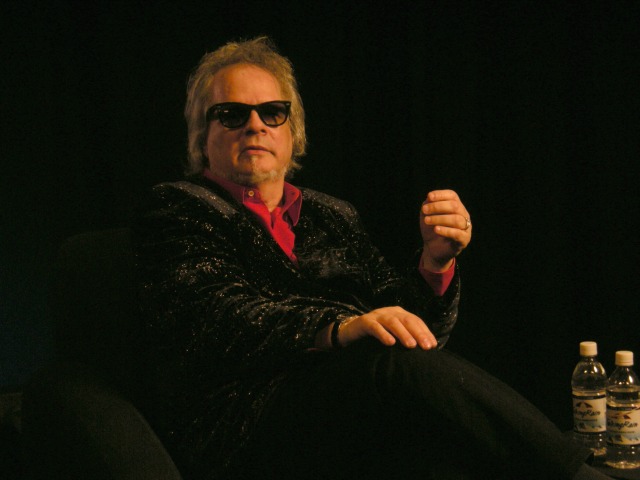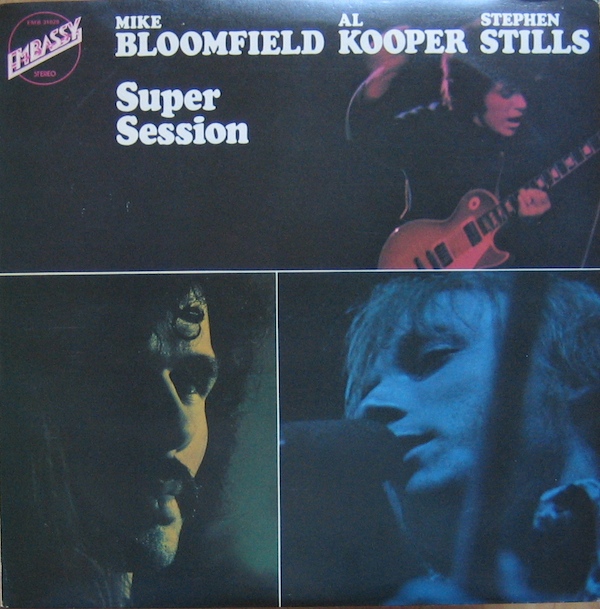Al Kooper, by rights, should be regarded as one of the giants of ’60s rock, not far behind the likes of Bob Dylan and Paul Simon in importance. …. he was a very audible sessionman on some of the most important records of mid-decade, including Bob Dylan’s “Like a Rolling Stone.” Kooper also joined and led, and then lost two major groups, the Blues Project and Blood, Sweat & Tears. He played on two classic blues-rock albums in conjunction with his friend Mike Bloomfield. As a producer at Columbia, he signed the British invasion act the Zombies just in time for them to complete the best LP in their entire history; and still later, Kooper discovered Lynyrd Skynyrd and produced their best work.
~Bruce Eder (allmusic.com)
Al Kooper Tribute:
Wikipedia:
| Born | February 5, 1944 (age 74) Brooklyn, New York, United States |
|---|---|
| Genres | Blues, R&B, pop rock |
| Occupations | Musician, songwriter, producer |
| Instruments | Vocals, guitar, bass, Hammond organ, keyboards, percussion,mandolin |
| Labels | ABC Records |
| Associated acts | Mike Bloomfield, The Blues Project, Blood, Sweat & Tears, Bob Dylan |
| Website | www.alkooper.com |
Al Kooper (born Alan Peter Kuperschmidt; February 5, 1944) is an American songwriter, record producer and musician, known for organizing Blood, Sweat & Tears (although he did not stay with the group long enough to share its popularity), providing studio support for Bob Dylan when he went electric in 1965, and also bringing together guitarists Mike Bloomfield and Stephen Stills to record the Super Session album. He has had a successful solo career since then, written music for film soundtracks, and has also lectured in musical composition. He continues to perform live.

- When he was twenty-one, Kooper moved to Greenwich Village
- He performed with Bob Dylan in concert in 1965, and in the recording studio in 1965 and 1966, including playing Hammond organ with Dylan at the Newport Folk Festival in 1965. Kooper also played the Hammond organ riffs on Dylan’s “Like a Rolling Stone”.
- It was in those recording sessions that Kooper met and befriended Mike Bloomfield, whose guitar-playing he admired. He worked extensively with Bloomfield for a number of years. Kooper played organ once again with Dylan during his 1981 world tour.
- Kooper joined The Blues Project as their keyboardist in 1965, leaving the band shortly before their gig at the Monterey Pop Festival in 1967.
- He formed Blood, Sweat & Tears in 1967, leaving after the group’s first album, Child Is Father to the Man, due to creative differences in 1968.
- He recorded Super Session with Bloomfield and Stills in 1968 as well
- in 1969 he collaborated with 15-year-old guitarist Shuggie Otis on the album Kooper Session
- In 1975 he produced the debut album by The Tubes.
- Kooper has played on hundreds of records, including ones by The Rolling Stones, B. B. King, The Who, The Jimi Hendrix Experience, Alice Cooper, and Cream.
- After moving to Atlanta in 1972, he discovered the band Lynyrd Skynyrd, and produced and performed on their first three albums, including the single “Sweet Home Alabama” and “Free Bird“.
- Kooper also wrote the score for the TV series Crime Story and the film The Landlord and has also written music for several made-for-television movies.
- He was also the musical force behind many of the children series, Banana Splits pop tunes, including “You’re the Lovin’ End.”
The famous “Turn Up The Organ” story (from Wikipedia):
Kooper had been invited to the [Like A Rolling Stone] session as an observer, and hoped to be allowed to sit in on guitar, his primary musical instrument. Kooper uncased his guitar and began tuning it. After hearing Mike Bloomfield, who was the hired session guitarist for the sessions, warming up in the room, Kooper concluded that Bloomfield at that point, was a much better guitarist, so Kooper put his guitar aside and retreated into the control room.
As the recording sessions progressed, keyboardist Paul Griffin was moved from the Hammond organ to piano. Kooper quickly suggested to producer Tom Wilson that he had a “great organ part” for the song (which he later confessed was just a ruse to play in the session), and Wilson responded, “Al, you’re not an organ player, you’re a guitar player”, but Kooper stood his ground. Before Wilson could explicitly reject Kooper’s suggestion, he was interrupted by a phone call in the control room. Kooper immediately went into the studio and sat down at the organ, though he had rarely played organ before the session. Wilson quickly returned, and was shocked to find Kooper in the studio. By this time, Kooper had been playing along with Dylan and The Band, his organ can be heard coming in an eighth-note just behind the other members of the band, as Kooper followed to make sure he was playing the proper chords. During a playback of tracks in the control room, when asked about the organ track, Dylan was emphatic: “Turn the organ up!”
–
Check out this great article:
From Songwriters in the Round:
Album of the day:
Al Kooper, Mike Bloomfield & Stephen Stills: Super Session
This is one of those albums that seems to get better with age and that gets the full reissue treatment every time a new audio format comes out. This is a super session indeed.
~Lindsay Planer (allmusic.com)
Youtube playlist:
Spotify:
– Egil


